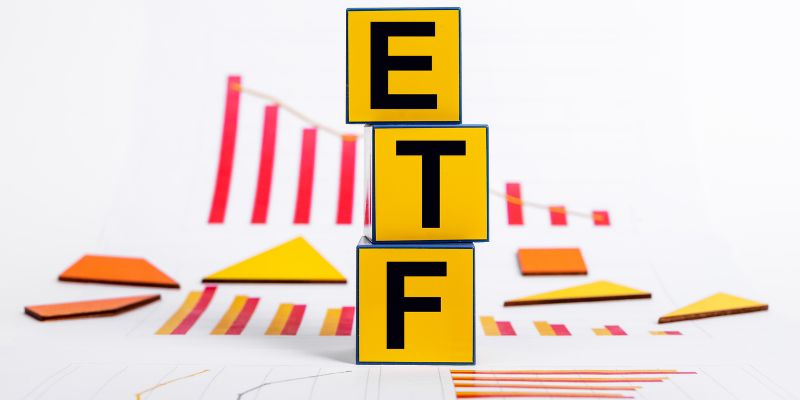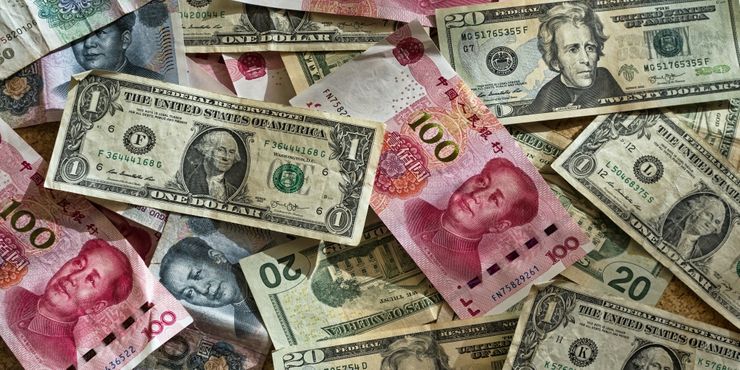In the world of investing, there's a tool that can help you make money even when the stock market is going down. It's called an inverse ETF or exchange-traded fund. These are like regular ETFs, but they're designed to do the opposite of whatever the market is doing. In this guide, we'll discover what inverse ETFs are and how they can be used by investors who believe the market is headed for a downturn.
How Inverse ETFs Work:
Inverse ETFs use a variety of strategies to achieve their objective of profiting from market downturns. Some funds may employ short-selling techniques, such as borrowing and selling shares to buy them back at a lower price. Others may use derivatives like futures contracts or options to gain inverse exposure to the underlying index or sector.

Considerations Before Investing:
While inverse ETFs offer the potential for profit in declining markets, they also come with certain risks that investors should be aware of. One significant risk is the potential for losses to be magnified due to the compounding effect of daily rebalancing, particularly in leveraged inverse ETFs. Additionally, these funds may not perform as expected during periods of high volatility or when the market moves sideways.
Top 10 Inverse ETFs for Bearish Investors
Proshares Short S&P 500 (SH):
Imagine a magic mirror that shows the opposite of the S&P 500. If the S&P 500 goes down, this mirror (SH) shows things going up. It's for people who think big U.S. companies in the stock market will struggle. You can protect your investments with SH or make money when the market isn't doing well.
ProShares Short Dow 30 (DOG):
DOG is like a reverse switch for the Dow Jones Industrial Average (DJIA). When the DJIA goes down, the DOG goes up. If you're not feeling positive about big U.S. companies, DOG is a good choice. It helps you hedge against losses or profit from declines in the stock market.
Proshares Short QQQ (PSQ):
PSQ is like a rewind button for the Nasdaq-100 Index. If you need more clarification about the future of tech and growth stocks, PSQ could be helpful. It allows you to bet against these stocks without selling them, saving you money on trading fees.
ProShares Short Russell 2000 (RWM):
RWM moves in the opposite direction of the Russell 2000 Index, a group of smaller U.S. companies. RWM, you need more time to feel better and be optimistic about small caps. It lets you profit from declines in small-cap stocks without selling them individually.
Direxion Daily S&P 500 Bear 1X Shares (SPDN):
SPDN tries to go against the S&P 500 Index. If you want to protect yourself or bet against a fall in the overall U.S. stock market, SPDN could help. It provides a simple way to hedge your portfolio against market downturns.
Direxion Daily Small Cap Bear 1X Shares (TZA):
TZA aims to follow the opposite pattern of the Russell 2000 Index. If you think small-cap stocks are in for a tough time, TZA could match your thoughts. It allows you to profit from declines in small-cap stocks without selling them individually.
ProShares UltraShort S&P500 (SDS):
SDS is like SH but more powerful. It aims to give you double the opposite return of the S&P 500 daily. SDS could boost your gains if you need to feel better about the U.S. stock market. It provides leverage, meaning you can amplify your returns if the market goes in the direction you anticipate. It is best inverse ETF of 2024.
Direxion Daily Financial Bear 1X Shares (FAZZ):
FAZZ aims to go against the financial sector. If you believe banks and financial companies will have a hard time, FAZZ could support your view. It allows you to profit from declines in the financial sector without selling individual stocks.
ProShares UltraPro Short QQQ (SQQQ):
SQQQ aims to triple the opposite return of the Nasdaq-100 Index daily. If you're sceptical about the tech sector, SQQQ could multiply your gains if things go your way. It provides triple leverage, meaning you can make three times the profit if the tech sector falls as you expect.
Direxion Daily Technology Bear 1X Shares (TECS):
TECS is like a tool for doubting tech. It tries to show the opposite of what's happening in the technology sector. If you need more confidence in tech, TECS might be your ally. It allows you to profit from technological sector declines without selling individual tech stocks.

Benefits of Inverse ETFs:
Protecting Against Market Drops:
Inverse ETFs allow investors to protect themselves from losing money when the stock market goes down. They act like a safety net.
Balancing Losses:
By adding inverse ETFs to their investments, people can balance out the money they lose when stock prices fall. It helps keep things stable.
Guessing on Markets:
Investors can also use inverse ETFs to guess what might happen in the stock market. If they think a certain part of the market will go down, they can use these ETFs to try and make money from it.
Conclusion:
In short, ETFs that make money when stocks go down give investors helpful tools to handle tricky market situations and earn from falling trends. These ETFs work by doing the opposite of what the market does, so they can help investors balance their investments, protect against losses, and take advantage of market predictions. However, investors need to know the risks involved, like potential losses caused by daily adjustments and borrowing money. Doing proper research, managing risks, and making smart choices about where to put money can make these ETFs useful for protecting investments and finding opportunities in changing markets.




